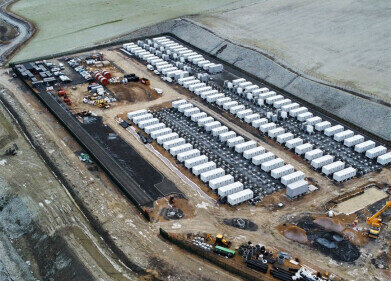Green Energy
The Advantages & Disadvantages of Biogas
Nov 01 2014
Biogas represents a non-polluting and carbon neutral energy source, which may prove extremely important in years to come. For decades, the relatively low cost of fossil fuels has delayed research into biogas harvesting and usage. However, as fossil fuel stocks dwindle and prices climb, biogas is being investigated with increased vigour.
How is biogas produced?
Biogas is produced when microbial organic matter degrades in anaerobic conditions. It can be harvested from any number of places, such as landfill sites, waste water plants and even breweries. Generally made using sludge or animal manures rich in carbohydrates, proteins and lipids, biogas contains a heady mixture of methane and carbon monoxide as well as some trace gases.
What are the disadvantages of biogas?
For biogas to become a viable fuel source, an enormous amount of investment would be required. Although biogas harvesting occurs on a small scale in some American states, larger-scale harvests are unprecedented and may throw up a raft of new problems. However, the number of sites producing biogas is increasing - USA has over 2,200 sites, with 191 on farms, around 1,500 anaerobic digesters at wastewater treatment plants and 576 landfill gas projects. By comparison, there are over 10,000 operating digesters in Europe. Recently, the Blue Mountain Biogas Power Generation plant in Beaver County, Utah came on stream in November, which you can read more about in this article: Blue Mountain Biogas Plant Turns Pig Manure into Power.
In addition to the disadvantages, biogas contains a number of trace gases, which can prove corrosive when they come into contact with the metal parts of some internal combustion engines.
What are the advantages of biogas?
Biogas is clean - it releases no additional carbon into the atmosphere when burnt and does not contribute to climate change, which you can read more about in this article: Does Biogas Contribute to Climate Change? When biogas is produced, valuable nutrients like nitrogen and prosperous are conserved and can be converted into crop fertilisers. Ordinary household waste, such as grass cuttings and food offcuts, can be converted into biogas efficiently. In fact, any biodegradable matter can be used as substrate.
Biogas can be produced on a small scale relatively cheaply and easily. Common technologies include “the fixed dome” biogas plant, “the floating dome” and “the bag type”. The fixed dome biogas plant is often referred to as the “Deenbandhu Model” - it consists of a concrete, lidded dome, which is filled with feedstock and water. Once enough pressure has built within the dome, biogas can be harvested through a small outlet. Similarly, the floating dome boasts a cylindrical dome and an inlet. Gas is harvested from an outlet pipe and utilized. Finally, the bag type plant is portable, so can be placed in any location. Made of rubberized nylon fabric, the bag can be placed in any location rich in biogas producing matter.
Potentially, biogas could be used to power a range of domestic applications, such as cooking, lighting and washing. In addition to this, biogas may be a viable pipeline gas and could even be used to power our cars in the future.
Renewable energy
Unlike non-renewable energy sources, such as oil, coal and natural gas, renewable energy sources are considered “sustainable” as they will not run out. In addition to this, renewable energy sources have a less damaging effect on the environment.
Events
Apr 22 2024 Hannover, Germany
Apr 23 2024 Kuala Lumpur, Malaysia
Apr 24 2024 Sao Paulo, Brasil
May 05 2024 Seville, Spain
May 13 2024 Munich, Germany














